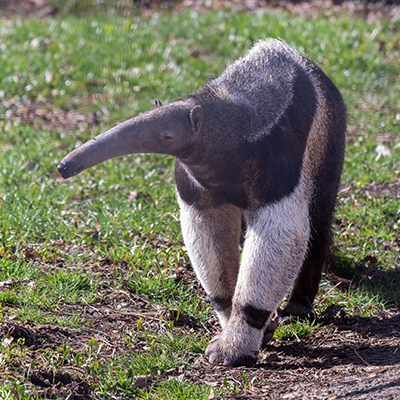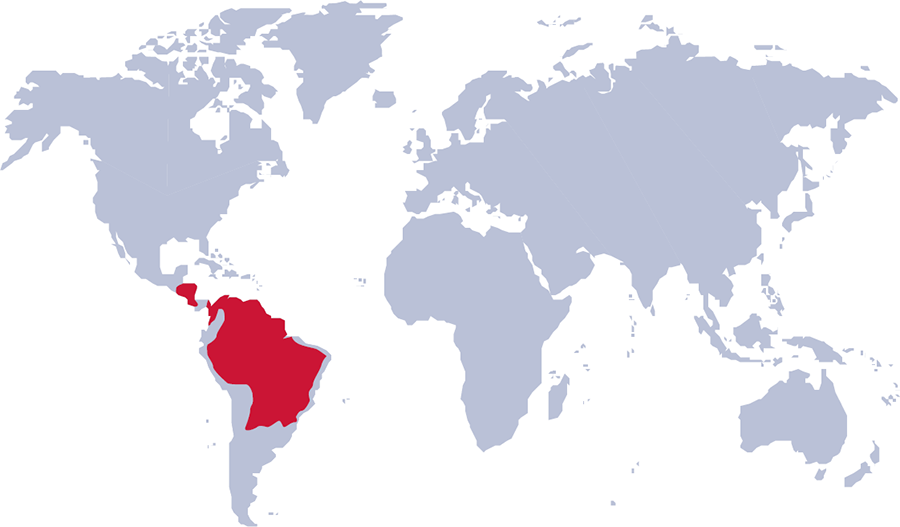
Giant Anteater
Giant anteaters are found throughout Central and South America except for Guatemala, Uruguay and El Salvador, where they are considered to be extinct.

Habitat
They live in wetlands, grasslands and tropical forests.
Our Giant Anteaters
We have a male and female Giant Anteater, named Lucifer and Nala.They were born in 2004 and 2005 respectively.
Nala is well known because she is the only living Giant Anteater with Type 1 Diabetes. The staff at the Royal Zoological Society of Scotland (RZSS) pioneered the approach to managing Nala's diabetes at Edinburgh Zoo, including the use of a blood glucose monitor usually used on humans.
They came to Dundee where there was close collaboration between zoos to ensure her transition went smoothly.
Both animals have settled well.
factfile
- Anteaters are good swimmers.
- They have no teeth so rely on their long sticky tongue for eating. Their tongue is about 60 centimetres long.
- Anteaters will only give birth to one young, which she will carry on her back for around 6 months.
- When walking, they tuck their long sharp front claws into palms and walk on their knuckles.
Anteaters are insectivores and will mainly eat termites, ants along with other insects. Giant anteaters are grey with black stripes that are outlined with white guard hairs.

